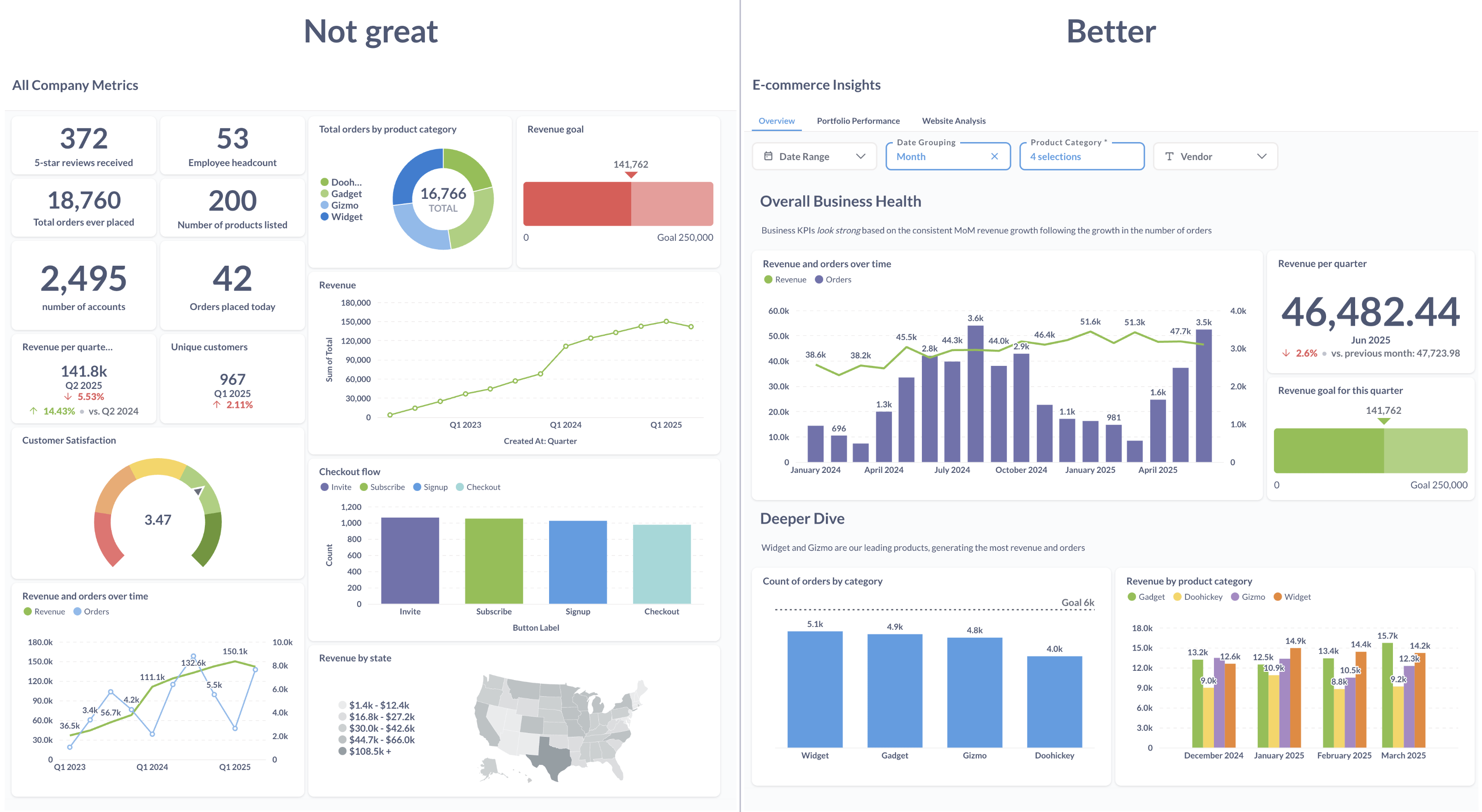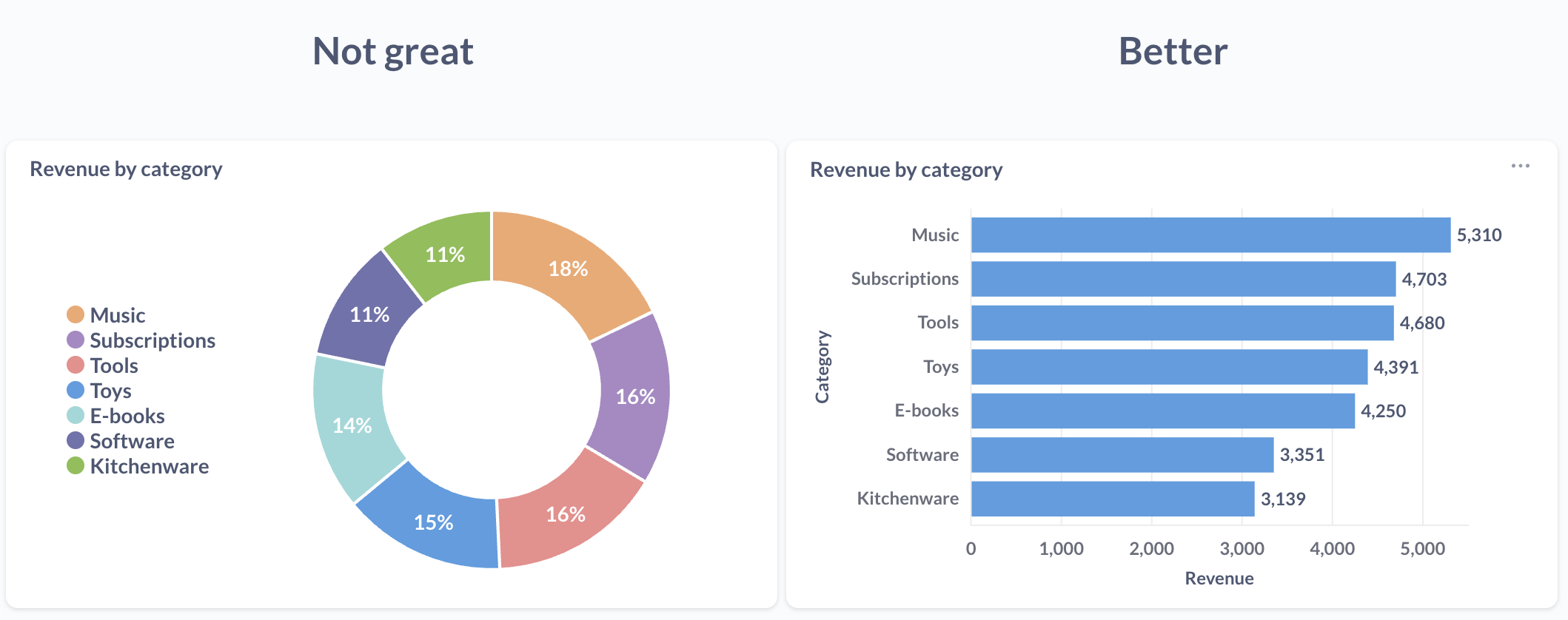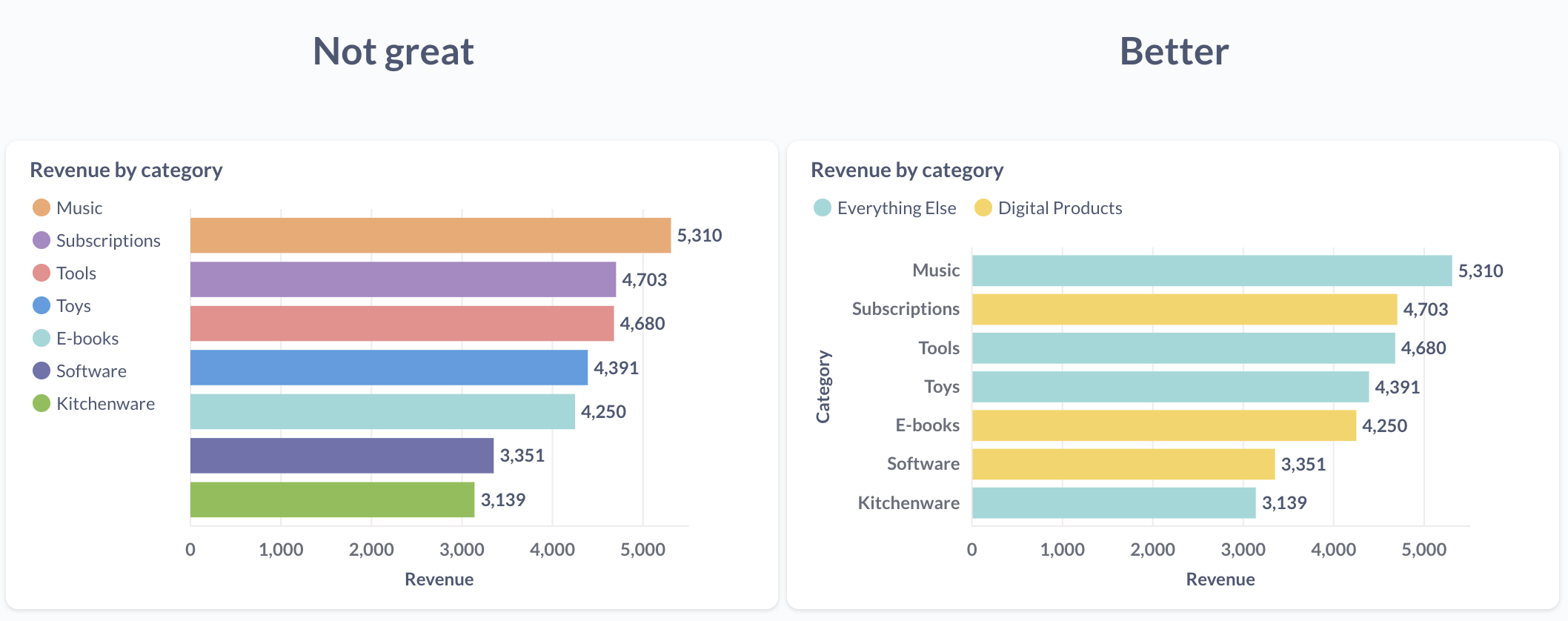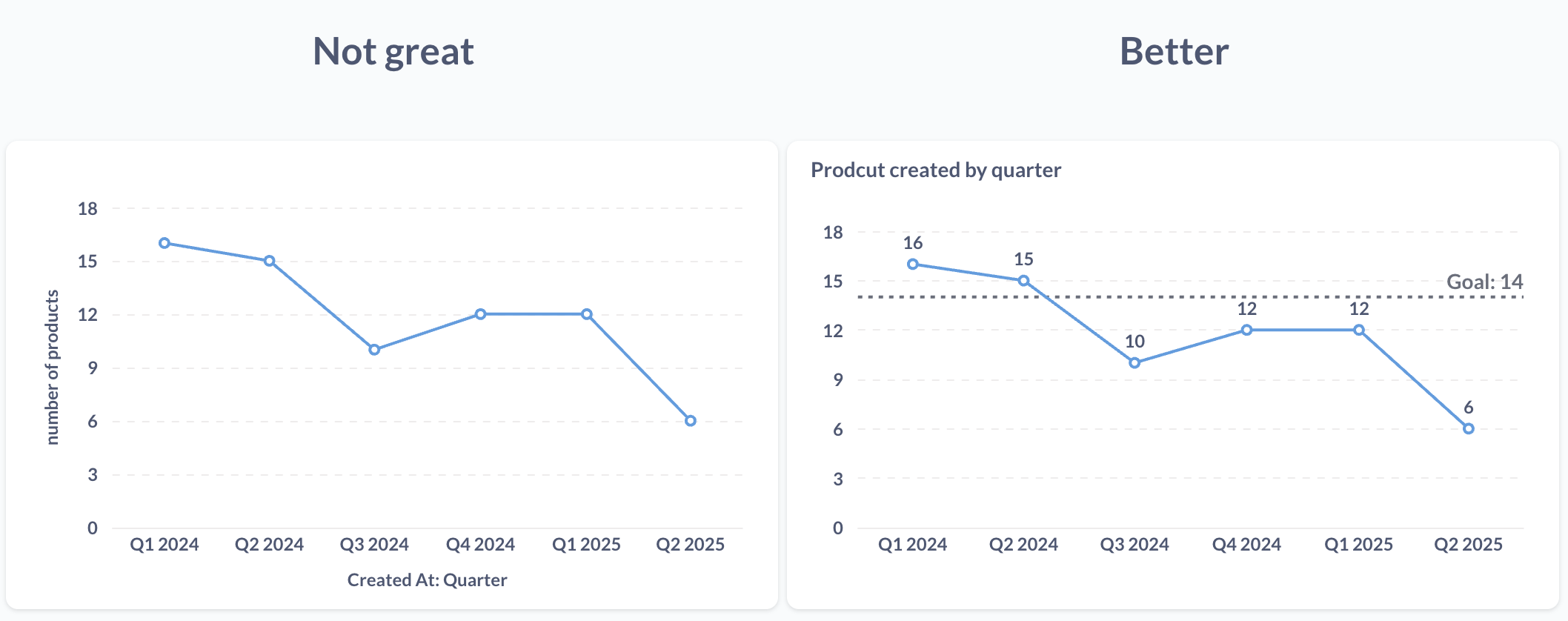‧
7 min read
Top 5 Dashboard fails (and how to fix them)
Abed Habli
‧ 7 min read

Share this article
You build a dashboard. You select your charts, position them neatly, and hit share. But when your manager opens it up, there’s silence, then confusion. They’re not sure what to focus on or what decision it’s supposed to support.
Dashboards should make decisions easier, but instead, they often become a confusing mess of charts and numbers.
The good news is that these issues are fixable. Once you recognize the patterns, they’re much easier to avoid.
Here are five dashboard mistakes that we see often, and how to fix them. This article is designed to help you create clear, informative, and compelling dashboards.
Fail #1: Showing everything at once
The hardest part of making a dashboard isn’t building charts — it’s choosing which charts not to build.
You know how it goes: you’re unsure which metrics matter most, so you include everything — a chart for every KPI, a graph for each segment, just in case.
The result is a dashboard that shows a lot but says little.
How to avoid it: Start with the decision, not the data

What specific question should this dashboard help answer?
Instead of a broad “Marketing Dashboard” with everything from website traffic to email open rates to ad spend, focus on a specific question, like “Which marketing channels are driving the most sign-ups this month?” That makes it clear what metrics matter.
For each chart, ask:
- Can this chart help someone make a decision?
- Would they miss important context without this chart?
Does that email open rate chart help explain which channels are driving sign-ups? If not, it belongs on a different dashboard.
Quick tip
Ask: If someone had only 30 seconds with this dashboard, would this chart be worth their time? If not, leave it out.
Fail #2: Using the wrong chart type
We’ve all seen:
- A pie chart with too many small slices
- A line chart used to compare categories instead of showing trends
- A bar chart packed with so many values that it’s hard to read
These aren’t just visual problems — they bury the key message. When your brain works too hard to decode the chart, it has less energy for the actual insight.
How to avoid it: Match your chart to what you’re trying to show
| What do you want to show? | Use this chart |
|---|---|
| Compare values (like sales by product type) | Bar chart |
| See trends over time | Line chart |
| Show parts of a whole | Pie chart — but only with a few, clear slices |
| Compare totals and see what they’re made of | Stacked bar chart — like total revenue split by sales channel |
| See a data spread (like user ages) | Histogram or box plot |
For example, say you want to compare revenue by category: Music ($5,310), Subscriptions ($4,703), Tools ($4,680), Toys ($4,391), and others. A pie chart might look nice, but can you instantly tell which one is the smallest? It’s tricky. A bar chart makes the difference obvious at a glance.

Visualization translates numbers into shapes. Choose shapes that make key ideas clear without extra cognitive load.
We wrote a full guide on this if you want to go deeper — Which chart should you use?
Quick tip
If your chart needs an AI agent to explain it, you probably chose the wrong one.
Fail #3: No clear layout or structure
Imagine walking into a room with hundreds of sticky notes on every wall. Some are related, some aren’t; there’s no obvious starting point. That’s what a poorly organized dashboard feels like.
Most people don’t read dashboards — they scan them. Without a clear visual flow, they’ll miss critical insights or give up entirely.
How to avoid it: Guide people through your data
- Create a clear visual path. Put your headline metrics at the top, then move to supporting details.
- Group related information. Revenue charts with revenue charts. Engagement charts with engagement charts.
- Use headers and spacing to separate sections and create breathing room.
- Use dashboard tabs (in tools like Metabase) to split large dashboards: high-level KPIs, filtered views by region or team, detailed tables.
Think of your layout like a story — it should guide the viewer through the data, not just display it.
Quick tip
Ask someone who’s never seen your dashboard to explain what they think it shows. Their confusion will point to areas you should restructure.
Fail #4: Overusing color
Color is excellent for drawing attention — but only when used with intention.
But many dashboards go overboard. Every chart uses different colors. Bright blue and green show up with no clear meaning. Some bars are red — does that mean something’s wrong? Or is it just the default?
When everything is highlighted, nothing stands out. Your brain can only track a few color signals before they become noise.
How to avoid it: Use color to communicate, not decorate

- Stick to a consistent palette. Use the same color for the same concept, such as blue for this year and gray for last year.
- Avoid rainbow charts. If a chart needs more than 3–4 distinct colors to make sense, you’re probably trying to show too much at once. Revisit Fail #2 — you may need to change the chart.
- Reserve bold colors for emphasis. Highlight an outlier, a key trend, or an alert-worthy number.
- Make use of saturation. If you really do need 7 different segments, try using shades of the same color. Lighter or darker tones can show distinction without visual overload.
Color isn’t just for looks. It’s part of the message.
Quick tip
If you’re not sure whether a color is helping, try removing it. If the message still lands, you didn’t need it.
Fail #5: Missing context
Numbers without context are easy to misread.
Is 25% good? Is 10,000 high or low? That spike on the chart — exciting or alarming? Compared to what?
Dashboard builders usually know what “normal” looks like, but your viewers might not. Without that context, they might make the wrong call.
How to avoid it: Add just enough information to explain the chart

- Use clear titles. Not “Metrics,” but “April 2025 revenue vs. forecast.”
- Label your axes. What’s being measured? Over what time period?
- Include comparisons. Show this year vs. last, or actual vs. target. It turns a number into a story.
- Add targets or benchmarks A goal line or previous average gives viewers something to measure against.
Remember: Your dashboard might make perfect sense to you because you have the context in your head. Your job is to bring that context into the visual.
Quick tip
If someone opened your dashboard for the first time, would they know what they’re looking at?
Dashboard success checklist
Before sharing your dashboard, check these points:
- Purpose: Can you state in one sentence what decision this dashboard helps make?
- Visualization: Does each chart use the correct format for its data?
- Structure: Does the layout guide people from high-level insights to details?
- Color: Is color used intentionally, not just decoratively?
- Context: Would someone new be able to understand what they’re looking at?



